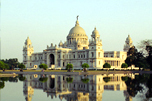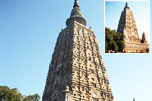Avijit Banerjee
Professor and Head of
Department of Chinese Language and Culture (Cheena Bhavana)
Visva-Bharati University
Santiniketan, West Bengal, India
On April 1, 1950, India and China officially established diplomatic relations. This was a major event that caused a sensation in the world. In 2020, we celebrate the 70th anniversary of the establishment of diplomatic relations between India and China that has attracted widespread attention. This is because both the countries today play a significant role in the entire world. India is the first non-socialist country to establish diplomatic relations with China. In 1954, the two countries jointly advocated the world-famous five principles of peaceful coexistence that laid a new foundation for India China relation and ushered in the first climax of friendly cooperation between the two countries. In June 1954, Chinese Premier Zhou Enlai visited India, and the joint statement issued by the Indian and Chinese Prime Ministers reiterated the five principles of peaceful coexistence. In October 1954, Indian Prime Minister Jawaharlal Nehru visited China, which was the first visit of the Prime Minister of a non-socialist country after the founding of New China. In November 1956, Premier Zhou Enlai again visited India, and wherever he went, thousands of people welcomed Premier Zhou and his entourage. The famous “Hindi Chini Bhai Bhai” slogan spread far and wide.
India’s famous Nobel Laureate Rabindranath Tagore took a pioneering role in the cultural and educational exchange between India and China in modern times. Tagore’s great friendship and deep love for the people of China was witnessed during his 1924 visit to China. The establishment of Cheena Bhavana in 1937 in Santiniketan symbolizes the successful representation of India-China cultural and educational cooperation. Chinese philosopher Hu Shih once said that India conquered China culturally for 20 centuries without ever sending a soldier across its border; the statement is often taken to highlight the rich history of cultural ties between the two civilizations, rather than any nationalistic superiority. For millennia, India and China shared deep cultural norms, primarily through Buddhism, which shaped both societies in unique ways. Post independence, this long history of peaceful cultural exchange is noticeable, via a conscious political effort, into a sense of bilateral solidarity, as seen in the Panchsheel Treaty.
The impact of the 1962 border conflict on the relationship between the two countries was profound. Although India and China had not broken off diplomatic relations, but both sides withdrew their ambassadors and closed the Consulate General. All kind of exchanges between the two countries including economic, cultural, non-governmental were suspended. India- China relations entered a long and frosty period. In the mid-1970s, India- China relations began to show a turning point, but overall the relations between the two countries remained tense. In 1976, India and China resumed the exchange of ambassadors. Next year in 1977, the two countries resumed direct trade and exchange of personnel and subsequently in 1979, the then Indian External Affairs Minister Atal Bihari Vajpayee made a path-breaking visit to China, which lead to the renewal of contacts at the highest political level after two decades.
In the late 1980s, India-China relations witnessed a major turning point when Indian Prime Minister Rajiv Gandhi made an epoch making visit to China in December 1988, the first Indian Prime Minister to visit China after 34 years. During Prime Minister Rajiv Gandhi’s landmark visit to Beijing, India and China signed two crucial agreements to establish a Joint Working Group (JWG) - to seek fair, reasonable and mutually acceptable solution on the boundary question - and a Joint Economic Group (JEG) and agreed to expand and develop bilateral relations in all fields. In 1991, Chinese Premier Li Peng visited India and resumed the exchange of high-level visits between India and China that had been interrupted for decades. In 1992, Indian President Venkat Raman visited China, which was the first visit of any Indian President to China since independence. Following this, Indian Prime Minister Narasimha Rao visited China in September 1993. It was during this visit that the historical Agreement on the Maintenance of Peace and Tranquillity along the Line of Actual Control (LAC) on the India-China Border Areas was signed. In 1996, Chinese President Jiang Zemin visited India, which was the first Chinese head of state to visit India since the establishment of diplomatic relations between the two countries. Both sides reached a consensus on building a “constructive and cooperative partnership for the 21st century”, which indicated the direction of development of bilateral relations.
Since entering the new century, India-China relations have entered a new period of rapid and comprehensive development. High-level exchange visits have maintained good momentum. In May 2000, Indian President K. R. Narayanan’s visit to China ushered in the celebration of the 50th anniversary of the establishment of diplomatic relations between India and China. This was followed by Chinese Premier Zhu Rongji’s visit to India in January, 2002 during which the two sides signed a series of documents on bilateral cooperation. India Prime Minister Atal Behari Vajpayee’s visit to China in June 2003 possess important significance as both the countries signed several agreements that later came to be regarded as turning point in India-China history. The trip was momentous in bringing the two Asian Neighbours closer to each other as both sides decided not to view each other as ‘threats’. A Border Trade Agreement was signed between the two countries and in a significant move both the leaders also decided to appoint their respective Special Representatives (SRs) to explore a solution in the border issue under the framework of boundary settlement.
In April 2005, Chinese Premier Wen Jiabao visited India and the two Prime Ministers signed a joint statement announcing the establishment of a “strategic partnership for peace and prosperity” between India and China. Foreign media spoke highly of Premier Wen’s visit to India, calling it “the handshake of two Asian giants”. A year later in November 2006, Chinese President Hu Jintao visited India, and the “Joint Declaration” issued by the two sides proposed ten strategies to enrich and strengthen India-China strategic cooperative partnership. Prime Minister Dr. Manmohan Singh paid his first official bilateral visit to China in January 2008. During the visit, a joint document entitled “A Shared Vision for the 21st Century” was issued to expedite the process of cooperation in various fields especially in economy and business. Chinese Premier Li Keqiang’s visit to India in 2013 resulted in the signing of eight agreements, including the one on establishing Chinese industrial parks across India for the first time augmenting Chinese investments into India and promoting India’s manufacturing sector. Both sides designated ‘2014’ as the ‘Year of Friendly Exchanges between India and China’. In October 2013, Prime Minister Dr. Manmohan Singh paid his second official visit to China and altogether nine agreements, including the Border Defence Cooperation Agreement (BDCA) and one on strengthening cooperation on trans-border rivers, were signed. In September 2014, during Chinese President Xi Jinping’s visit to India sixteen agreements were signed in various areas including, commerce & trade, pharmaceuticals, audio-visual co-production, railways, space-cooperation, culture, establishment of industrial parks, sister-city arrangements etc.
In recent years the high-level exchanges between the two countries have been more frequent, trade and economic cooperation enjoys rapid development, cooperation in the field of culture and education have experienced a steady growth. In between 2015 and 2017, the leaders of both the countries met each other on their respective countries or on the sidelines of various international summit. After the first informal summit between Narendra Modi and Xi Jinping in April 2018 in Wuhan, China, India-China relations have once again become the focus of public opinion. The Wuhan meeting in April 2018 opened a new mechanism for high-level exchanges between the two countries. It reached a series of strategic consensus, pointed out the direction for the subsequent development of India-China relations. At present, there are more than 30 types of dialogue mechanisms between the two countries, covering politics, economy and trade, people to people, defense, security, and local areas. The establishment of the High Level Mechanism on Cultural and People-to- People Exchanges was an important outcome of the Wuhan Summit. The 2nd India-China Informal Leadership Summit was held in Mammalapuram, India in October, 2019 and the two sides agreed to designate 2020 as the “Year of India-China Cultural and People to People Exchanges”. Both the countries also agreed to set up a new mechanism for trade and investment related issues.
Culture is an important content in India-China exchanges. The two are basically homogeneous eastern multiculturalism, such as cognition, experience and intuition, focusing on long-term and comprehensive, emphasizing ethical and moral spirit, stressing self-examination, advocating harmony between nature and humanity, and advocating peace and love. There is affinity between Indian and Chinese homogenous cultures, and it is easy to accept and tolerate each other. More and more people in the two countries regard each other’s countries as destinations for tourism. In China, practicing yoga and enjoying Indian movies have become new fashions for young Chinese. These exchanges have undoubtedly brought the distance between the Chinese and Indian people closer and enhanced the understanding, friendship and mutual trust between the people of the two countries. As two rapidly-growing Asian countries, both countries have a lot in common in terms of traditional values. But due to difference in language, the two countries don’t have as much access to each other’s culture as we should have. So, there are misunderstandings between the two countries. Recently a number of Indian and Chinese Universities showed keen interest in collaboration programmes. The mutual exchange of people from the educational field and the growth of centres of Chinese learning in India and Indian learning in China will inject new vigour in the bilateral relationship between the two countries.
Of course, while seeing the remarkable achievements and good momentum in the development of India-China relations, one cannot ignore the problems and obstacles in the relationship between the two countries, and they need to be taken seriously. In the seventy years from the beginning of the 1950s (establishing diplomatic relations) to the end of the last century, India- China relations has encountered many ups and downs from the hot to the cold in the 1950s, and slowly rising after falling to the bottom in the 1960s, and began to accelerate in the 1990s and maintain good momentum. Since the beginning of the 21st century, the development of India- China relations has never been on a straight line.
The world economy is experiencing a historic shift and there is no doubt that global economy in 21st century will be dominated by India and China. Although the road to the rise of India and China is still long, the direction of the future relations between these two Asian powers has become a hot topic in international public opinion. There is a fairly popular view that two great powers, especially those that are neighbours of each other, will inevitably become strategic competitors and there will also be conflicts, differences, and competition among strategic partners which cannot be avoided. Although the balance of power is an important factor influencing international relations, it is not a determining factor. The key lies in the internal and external policies implemented by the political leadership of a country, whether it can correctly view its own country and other countries. The leaders of India and China on many occasions unanimously agreed that both the countries do not pose a threat to each other and also maintained that Asia and the world have enough room for both India and China to develop. Under these circumstances, both sides should properly handle the historical and practical problems in the bilateral relations, take care of each other’s concerns, while increasing trust and dispelling doubts. The exchange of warm words of greetings by the leaders of the two countries to mark the 70th anniversary of the establishment of diplomatic ties between India and China in the midst of the Coronavirus pandemic is an indication of the noble intention of the leaders of both sides. It is also crucial for the two countries not to sharpen rhetoric against each other and look for a pragmatic solution for the existing problems between the two countries. The onus lies on both India and China to maintain stability in South Asia which is beneficial for the people of the whole world in general and the common people of India and China in particular. If the people of both the countries want to have a growing and prosperous India and China, if we all want to have a harmonious Asia, and also a peaceful and progressive world, friendship and cooperation between India and China is indispensable.




